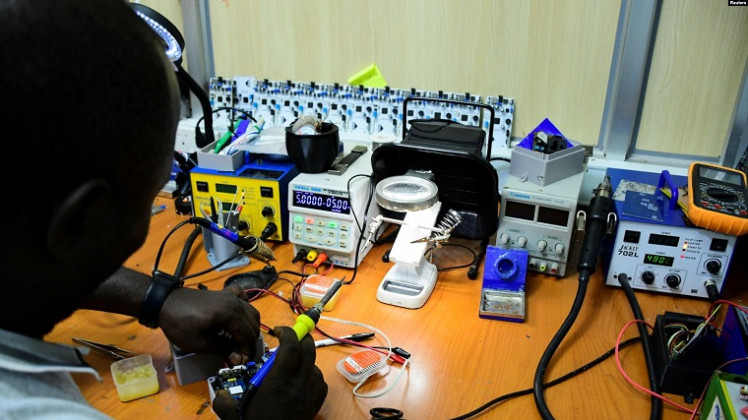KAMPALA, UGANDA: Ugandan researchers have developed low-cost air quality monitoring sensors that work in extreme conditions and will allow Uganda to switch from expensive imported monitors in its bid to tackle rising air pollution.
Kampala, Uganda’s capital home to two million people, ranks among the world’s most polluted cities, with pollution levels up to seven times higher than the World Health Organization’s safe standards, according to the 2021 World Air Quality Report.
Engineer Bainomugisha, who leads the research at Makerere University in Kampala, said the team had been motivated by the growing death toll caused by air pollution around the world.
Pollution remains the world’s largest environmental threat to human health, and in 2017 was responsible for 15 per cent of all deaths globally, according to a report by the Global Alliance on Health and Pollution (GAHP).
“That (number of deaths caused by pollution) was really an eye opener… to come in with technology solutions and how we could contribute to improving air quality,” Bainomugisha said.
Around 28,000 people per year die as a result of air pollution in Uganda, according to GAHP.
The AirQo air quality monitoring project, which is partly funded by Google, relies on a network of sensors, which cost $150 a piece, to gather air quality data around Kampala.
Using artificial intelligence technology and machine learning, this data is then processed before it is uploaded onto a cloud-based service accessible to consumers and the public via a smart phone application.
Kampala, where major sources of pollution include dust from unpaved roads, wood fuel use, vehicle and industrial emissions and open burning of solid waste, previously relied on air quality monitors mostly imported from the United States at about $30,000 a piece.
The equipment, which required expensive maintenance, broke down frequently because they were not designed specifically for the local environment, city officials say.
Bainomugisha said AirQo’s monitoring devices are installed around the city including in schools, residential areas, and on motorbike taxis.
Designed to withstand conditions including extreme heat and dust, the devices are powered both by electricity from the grid and solar power to allow them to operate when power supplies are interrupted, he said.
If you would like your article/opinion to be published on Uganda’s most authoritative news platform, send your submission on: [email protected]. You can also follow DailyExpress on WhatsApp and on Twitter (X) for realtime updates.



